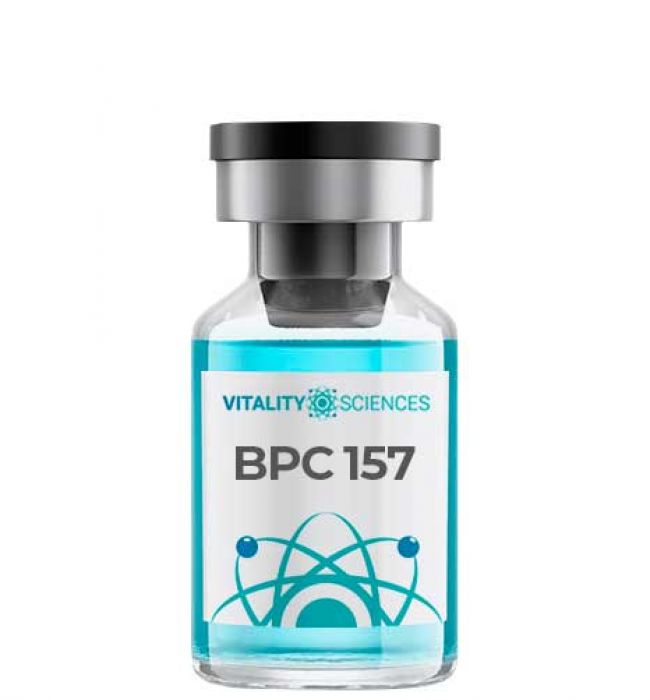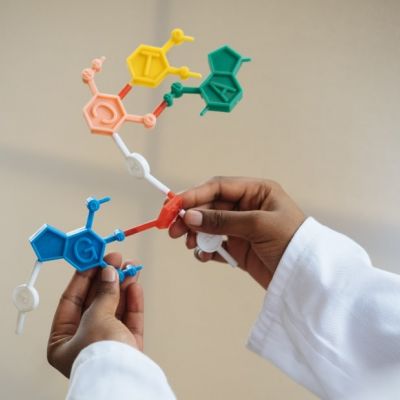BPC-157
Body Protection Compound 157 (BPC-157), also known as Pentadecapeptide. BPC-157, is a peptide discovered in the human digestive system that has been shown in multiple studies to enhance connective tissue healing, including tendons, muscles, and nerves.
But is it just a healing peptide? Continue reading if you want to know the answer.
What You Should Know About the BPC-157 Peptide
Physical talents naturally diminish with aging, as is generally recognized.
With age, several physiological changes occur, including those affecting the digestive system (GI).
As a result of these physiological and pathological changes, gastrointestinal disorders primarily afflict the elderly.
Several treatments may be helpful in the short term, but research into long-term remedies is currently ongoing.
Peptides have proven to be a highly intriguing candidate in test subjects thus far.
In controlled laboratory settings, BPC-157 is one such peptide that has proven success in a variety of medical scenarios, including wound healing, gastrointestinal disease treatment, and restoring broken joints.
Introduction
BPC-157 is a 15-amino acid peptide with hepatoprotective effects.
As the name implies, body protection compound (BPC) is an amino acid fragment isolated from human bodily fluids, most notably stomach juice.
BPC-157’s 15 amino acids also give it another name: pentadecapeptide.
These peptides, which occur naturally in the human body, have significant advantages over synthetic counterparts, including good biocompatibility and human stability.
A Quick Overview of BPC-157
The brain-gut axis, a forerunner of modern BPC-157, was discovered in the 1890s.
In 1895, a sham-feeding trial of dogs with gastric fistula revealed the vagus nerve’s participation in regulating stomach acid secretion.
After multiple in-depth investigations to comprehend anatomy and medical discoveries, researchers uncovered peptides’ considerable impacts on changing gastrointestinal secretions and diminishing lesions in the mid-1980s.
Because of these activities when given at the hypothalamic site or cerebrospinal fluid (CSF), peptides are a potential competitor in CNS and GI ailments.
The Function of BPC-157 in Wound Healing
When given, BPC-157 mimics the actions of GH by activating GH receptors.
Proteins such as BPC-157 peptide bind to growth hormone receptors and promote cell development.
It causes angiogenesis, which is the creation of new collagen-based tissue and an intricate network of blood vessels.
The wound is effectively “rebuilt” and heals more quickly as a result.
The Role of BPC-157 in Gut Health Maintenance
Because serotonin is an enteric neurotransmitter, it is abundant in the GI tract and mucosa.
Changes in serotonin levels may have an effect on digestive tract mucosal function and stomach blood flow.
BPC-157’s antidepressant action, in particular, counteracts the symptoms of depression generated by serotonin.
The peptide prevents serotonin from attaching to 5-HT2A receptors, lowering the neurotransmitter’s effectiveness.
BPC-157 Values and Applications
The following are the peptide’s key advantages:
Wound healing has been improved.
Suffering reduction
Improved digestive capabilities
Gut health improves, and intestinal inflammation decreases.
Aids in the treatment of Irritable Bowel Syndrome (IBS) by repairing tissue damage in bone, muscle, and tendons.
The peptide’s full potential, notably in the treatment of gastrointestinal ulcers, has now been widely researched; the findings of this research are discussed further in this article.
By boosting blood vessel creation and exerting anti-inflammatory effects, the peptide has been shown to aid functional recovery.
As a result, BPC-157 promotes tendon, ligament, and bone regeneration very effectively.
Animal Test Subjects Research
The Beneficial Effects of BPC 157
This study included three unique rat models:
skin wounds colon anastomosis synthetic sponge implantation
The rats were divided into groups and either given a placebo or the BPC-157 peptide.
Following therapy, histological tests were done on all animals.
BPC-157-treated rats had higher levels of collagen, reticulin, and blood vessel development than control rats.
As a result, we know that the peptide stimulated granulation tissue and angiogenesis, which expedited healing.
The fact that BPC-157 peptide was equally effective when injected intragastrically or topically added to the research’s intrigue and suggested that it may be used as a therapeutic agent for many wound types.
Digestive Health BPC-157
The purpose of this study was to compare the effects of BPC-157 peptide to those of other angiogenic growth factors such as EGF, FGF, and VEGF.
The main rationale was that BPC-157 is easy to give and has high stability and biocompatibility.

The same effects were observed regardless of the route of administration (intraperitoneal, oral, or local).
The peptide’s angiogenic benefits, as demonstrated here, extend to local wounds and ligaments, gastrointestinal (GI) wounds, and bone repair.
BPC-157 and Muscle Regeneration
In this rat study, injured gastrocnemius muscle complexes were used.
The rats were then given the steroid methylprednisolone (corticosteroid).
Following that, the corticosteroid rats were divided into two groups, one receiving BPC-157 and the other a placebo.
Both medications were given intraperitoneally or topically every 24 hours, and patients were first monitored on days 1, 2, 4, 7, and 14.
Also, read Lucia Gibson, Storm Brieanne Sixx, Ka Ho Cho
Corticosteroid treatment was shown to dramatically worsen muscle damage in rats.
In contrast, after being injured, the gastrocnemius muscles of subjects given BPC-157 showed evidence of healing and complete restoration of their functional capacity.
This discovery demonstrated the peptide’s ability to reverse systemic corticosteroid therapy and accelerate muscle regeneration.




